Come and See Blu-ray Movie
HomeCome and See Blu-ray Movie 
Иди и смотри / Idi i smotriCriterion | 1985 | 143 min | Not rated | Jun 30, 2020
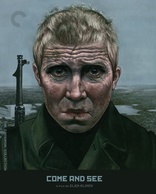
Movie rating
8.7 | / 10 |
Blu-ray rating
| Users | 4.7 | |
| Reviewer | 5.0 | |
| Overall | 4.7 |
Overview
Come and See (1985)
As Nazi forces encroach on his small village in present-day Belarus, teenage Flyora eagerly joins the Soviet resistance. Rather than the adventure and glory he envisioned, what he finds is a waking nightmare of unimaginable carnage and cruelty.
Starring: Aleksey Kravchenko, Olga Mironova, Liubomiras Laucevicius, Vladas Bagdonas, Jüri LumisteDirector: Elem Klimov
| Foreign | Uncertain |
| Drama | Uncertain |
| War | Uncertain |
Specifications
Video
Video codec: MPEG-4 AVC
Video resolution: 1080p
Aspect ratio: 1.37:1
Original aspect ratio: 1.37:1
Audio
Russian: LPCM Mono (48kHz, 24-bit)
Subtitles
English
Discs
Blu-ray Disc
Single disc (1 BD)
Playback
Region A, B (locked)
Review
Rating summary
| Movie | 5.0 | |
| Video | 5.0 | |
| Audio | 5.0 | |
| Extras | 5.0 | |
| Overall | 5.0 |
Come and See Blu-ray Movie Review
Reviewed by Dr. Svet Atanasov July 18, 2020Elem Klimov's "Come and See" (1985) arrives on Blu-ray courtesy of Criterion. The supplemental features on the disc include rerelease trailer; archival interview with the director; xclusive new video interview with German Klimov; new interview with cinematographer Roger Deakins; archival programs; and more. The release also arrives with a 30-page illustrated booklet featuring essays by critics Mark Le Fanu and Valzhyna Mort, as well as technical credits. In Russian, with optional English subtitles for the main feature. Region-A/B "locked".
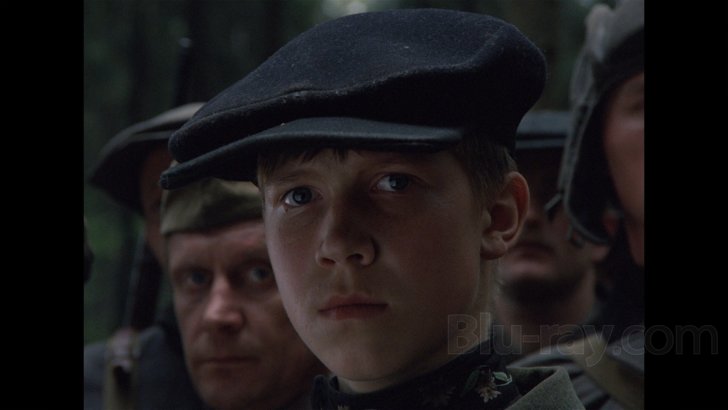
The new recruit
One cannot even begin to comprehend what took place in Belarus -- and other neighboring lands that were invaded during the same period -- if one does not realize what Hitler and his armies were engaged in. It was not a conventional war. It was a carefully organized and vicious extermination campaign, a modern-day genocide. Elem Klimov’s film Come and See highlights precisely this distinction.
The events in the film are seen primarily through the eyes of a fatherless boy named Flyora (Aleksei Kravchenko) who is slowly pushed on the verge of a complete mental breakdown. While playing with his best friend, Flyora discovers an old rifle and then declares before his mother that he has made a decision to join the local partisans. He thinks that it is his duty because with the exception of the village idiot and a few dedushkas who are too old and sick to fight the invaders all other men have already done so. Flyora’s heartbroken mother, who has to take care of his younger twin sisters, begs him not to abandon her, but he unceremoniously rejects her plea and then heads to the nearby forest where the partisans have built a large camp.
Commander Kosach’s (Liubomiras Laucevicius) reluctance to treat the ‘new recruit’ as he does the rest of the partisans, however, quickly pushes the boy away from the camp. But instead of returning to his mother Flyora begins wandering around the forest and eventually meets Glasha (Olga Mironova), who has had a similarly disappointing experience. The two connect emotionally and after helping each other overcome their frustration head back home. The carnage they discover overwhelms them and they leave the area, but shortly after Flyora begins to realize that the entire country has been set on fire.
The film feels like a fragment from an astonishingly real nightmare. Predictably, it can be very intense, but not because there is a great deal of cinematic drama in the progression of the action. Klimov uses the horrific visuals to accomplish something different. After Flyora returns to the village and then enters the swamp the film effectively destroys the idea that the carnage that was unleashed in Belarus was part of a conventional war. The end goal was not to win, it was to exterminate an entire nation.
The strength of the film, however, isn’t in its ability to brilliantly recreate the despicable actions of the invaders and make them look authentic. (To be clear, there are some absolutely unforgettable visuals, like the mass burning of the villagers, and they look very authentic). What makes it special and different from every other war film is the stunning visualization of the mental horror that overwhelms Flyora and many of the people around him. Klimov used real survivors and their relatives while making the film and the raw emotions his camera captures, especially during close-ups, are absolutely bone-chilling. There is just a different kind of intensity on display that does not feel rehearsed and timed to perfection; it is entirely spontaneous and so sincere that the human suffering becomes genuinely terrifying.
The camera movement and use of light produce visual contrasts that are practically unseen in Western war films. For example, there are prolonged close-ups with peripheral movement which leaves the impression that one is looking at a portrait that is slowly coming alive. Elsewhere, while following Flyora and some of his comrades, the camera essentially floats in the air as it tries to stay close to them.
*Criterion’s release is sourced from a recent 2K master struck from the original 35mm camera negative. The master was prepared by Mosfilm.
Come and See Blu-ray Movie, Video Quality 
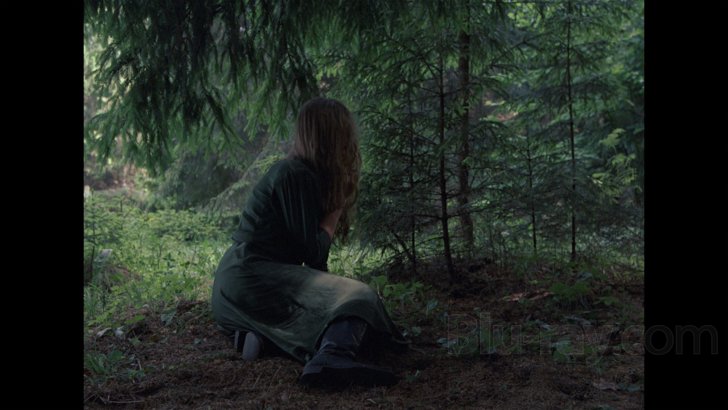
Presented in its original aspect ratio of 1.37:1, encoded with MPEG-4 AVC and granted a 1080p transfer, Come and See arrives on Blu-ray courtesy of Criterion.
The following text appears inside the booklet that it is provided with this Blu-ray release:
"This new digital transfer was created in 2K resolution from the 35mm original camera negative at Mosfilm. The original monaural soundtrack was remastered from the 35mm magnetic track.
Restored by: Igor Bogdsarov, Viktor Tamazin, Aleksei Senkovsky, Irina Agafonova.
Restoration producer: Karen Shakhnazarov."
The only other release of Come and See that I have in my library is this two-disc DVD set from Nouveaux Pictures, which for a long period of time offered the best technical presentation of the film. Now it is useless. The Blu-ray release offers such vastly superior technical presentation that I actually felt like I hadn't see the film before. There is only one area -- the footage from the house where the young boy is recruited -- where I felt that the brightness levels could have been slightly better, but overall on the Blu-ray the visuals have an entirely new and very attractive organic quality. The color grading job is quite similar to the one from the DVD release, only with much more improved and better balanced primaries and nuances. Image stability is outstanding and so is the fluidity of the visuals. Finally, there are absolutely no traces of age-related imperfections. Great restoration. (Note: This is a Region-A/B "locked" Blu-ray release. Therefore, you need to have a Region-A, Region-B, or Region-Free player in order to access its content).
Come and See Blu-ray Movie, Audio Quality 
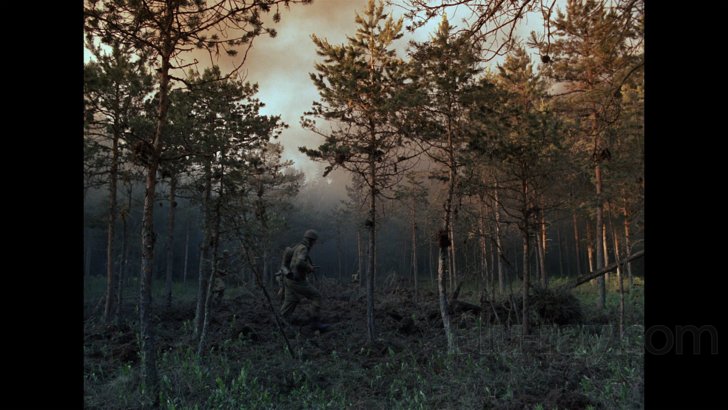
There is only one standard audio track on this Blu-ray release: Russian LPCM 1.0. Optional English subtitles are provided for the main feature.
The audio is very clean, sharp, and with plenty of dynamic oomph. I did a few comparisons with the old DVD release I have in my library and to be honest was quite surprised by the massive upgrade. Needless to say, here the audio is also properly pitched. There are no age-related anomalies to report in our review.
Come and See Blu-ray Movie, Special Features and Extras 
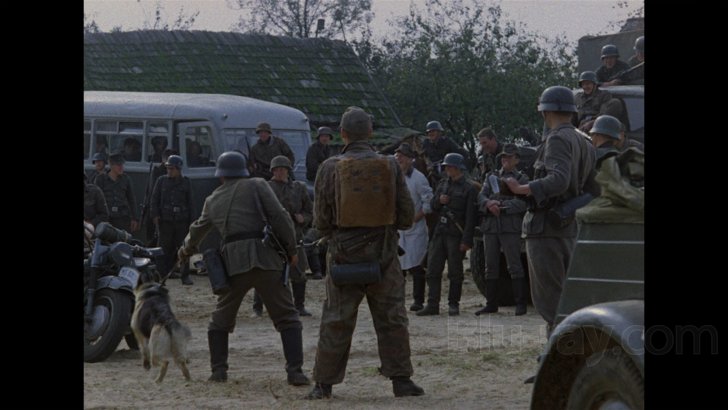
- Rerelease Trailer - original trailer for the recent restoration of Come and See. Courtesy of Janus Films. In Russian, with imposed English subtitles. (2 min, 1080p).
- Roger Deakins - in this new interview, cinematographer Roger Deakins (1984) discusses the visual style of Cone and See. The interview was conducted exclusively for Criterion in Los Angeles in February 2020. In English, not subtitled. (10 min, 1080p).
- Elem Klimov - in this archival interview, director Elem Klimov discusses the conception of Come and See and some of the specific changes that had to be made while the project evolved. Also, there are some very interesting comments about the need to shoot a film like Come and See. The interview was conducted in 2001. In Russian, with optional English subtitles. (21 min, 1080i).
- Alexei Kravchenko - in this archival interview, Alexei Kravchenko recalls how he was cast to play the character of Flyora and what it was like to work with Elem Klimov. The interview was conducted in 2001. In Russian, with optional English subtitles. (14 min, 1080i).
- Victor Petrov - in this archival interview, production designer Victor Petrov recalls his work with cinematographer Alexei Rodionov and discusses the use of extras/non-professional actors and the many sacrifices the entire crew made during the shooting process. The interview was conducted in 2001. In Russian, with optional English subtitles. (8 min, 1080i).
- Flaming Memory - Belarusian writer and director Viktor Dashuk's five-part documentary series recounts the horrors experienced by the Belarusian people during WW2, through firsthand accounts of the survivors and newsreel footage. Presented here are three of the five films. In Russian, with optional English subtitles. (50 min, 1080p).
1. Handful of Sand (1975)
2. Mute Scream (1975)
3. Women from the Killed Village (1975)
- German Klimov - in this new video interview, German Klimov discusses the life and legacy of his brother, director Elem Klimov, as well the conception and reputation of Come and See. The interview was conducted for Criterion in Moscow in February 2020. In Russian, with optional English subtitles. (27 min, 1080i).
- The Story of the Film "Come and See" - this archival program features raw footage from the shooting of Come and See as well as clips from interviews with Elem Klimov, writer Ales Adamovich, and actor Alexei Kravchenko. The program was produced in 1985. In Russian, with optional English subtitles. (11 min, 1080i).
- Booklet - 30-page illustrated booklet featuring "Orphans of the Storm" by Mark Le Fanu; "Read and See: Ales Adamovish and Literature Out of Fire" by Valzhyna Mort; and technical credits.
Come and See Blu-ray Movie, Overall Score and Recommendation 
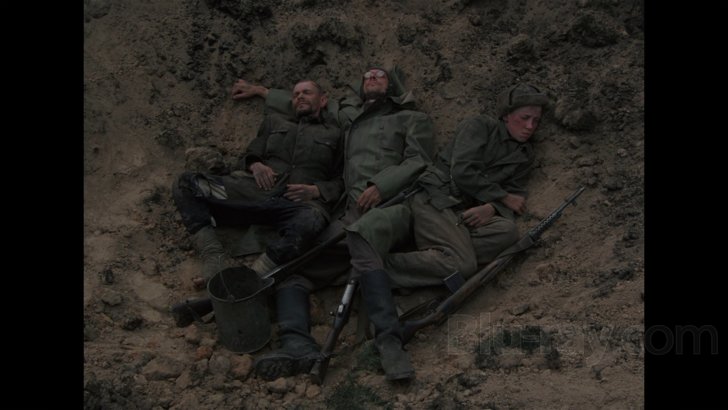
I cannot think of another war film quite like Come and See. It is very hard-hitting but at times also unusually elegant and even poetic. Sadly, Roger Deakins is right to point out that these types of powerful authentic films can no longer be made because with the evolution of digital technology something special has been lost. (In case you are wondering, it is the need for raw human emotions, which digital technology can deliver on demand). Criterion's Blu-ray release of Come and See is sourced from an outstanding 2K master that makes revisiting the film quite an experience. If you reside in a Region-B territory, you can pick up the release as well. It is coded for Regions A and B. VERY HIGHLY RECOMMENDED.
Similar titles
Similar titles you might also like

Ivan's Childhood
Ива́ново де́тство / Ivanovo detstvo
1962

In the Fog
V tumane
2012

The Cranes Are Flying
Летят журавли / Letyat zhuravli
1957

The Ascent
Восхождение / Voskhozhdenie
1977

A Hidden Life
2019

Mirror
Зеркало / Zerkalo
1975

Shame
Skammen
1968

Stalker
Сталкер
1979

The Passion of Anna
En passion
1969

The Human Condition I: No Greater Love
人間の條件 / Ningen no jôken / Parts 1 and 2
1959

Ashes and Diamonds
Popiól i diament
1958

I Am Cuba
Soy Cuba
1964

The Human Condition III: A Soldier's Prayer
人間の條件 / Ningen no jôken / Parts 5 and 6
1961

The Painted Bird
Nabarvené ptáce / Slipcover in Original Pressing
2019

Andrei Rublev
Андрей Рублёв | Andrey Rublev | Tarkovsky's Preferred Cut and Original versions
1966

Throne of Blood
蜘蛛巣城 / Kumonosu-jô
1957

City of Life and Death
南京!南京! / Nanjing! Nanjing!
2009

Army of Shadows
L'armée des ombres / Better encode than 2011 release
1969

Through a Glass Darkly
Såsom i en spegel
1961

Persona
1966